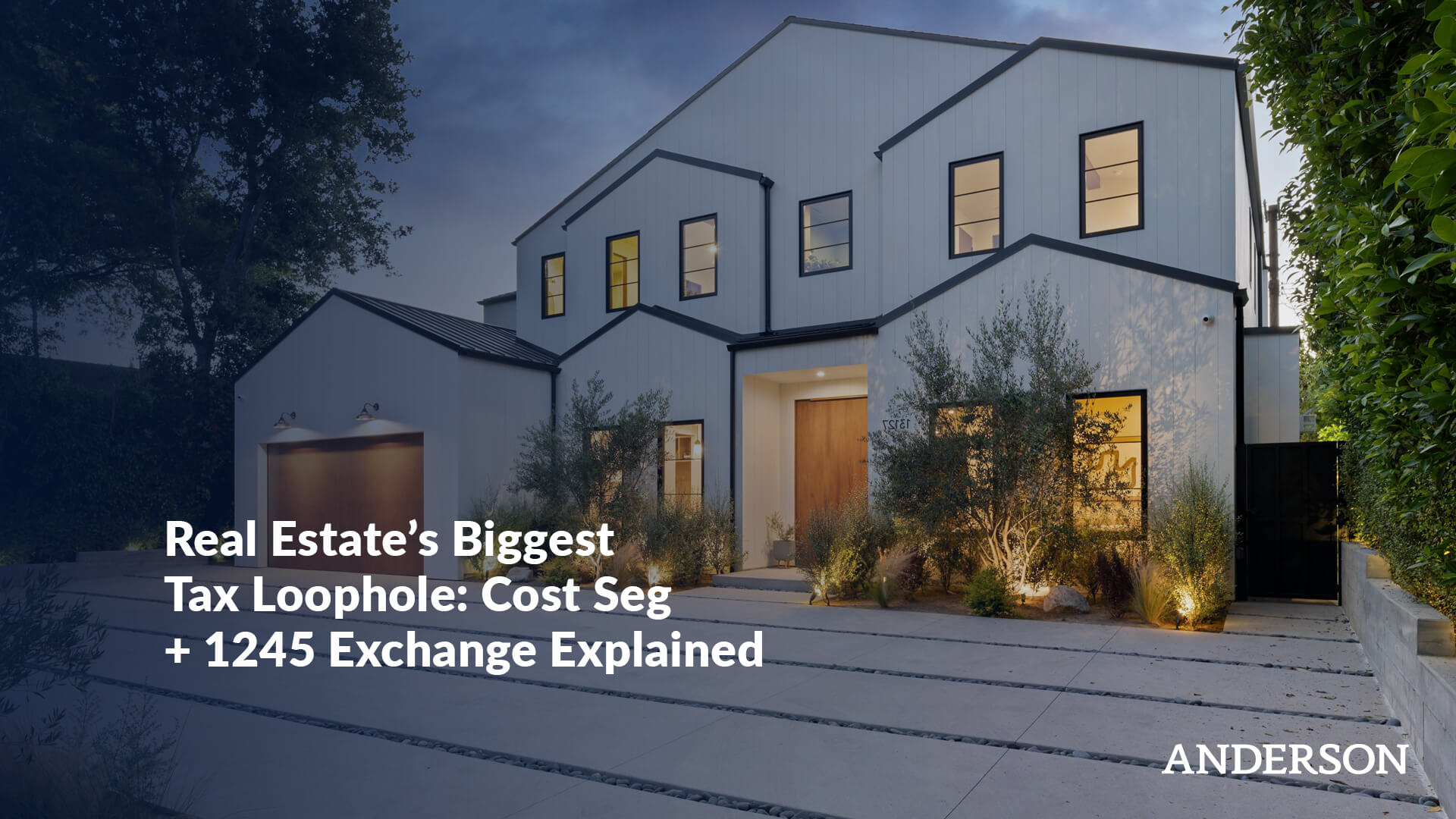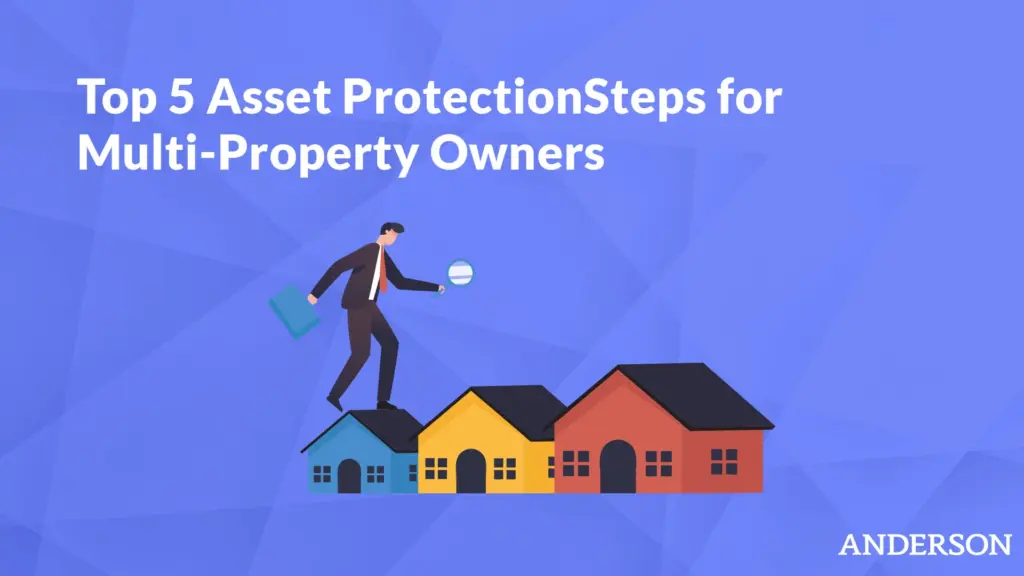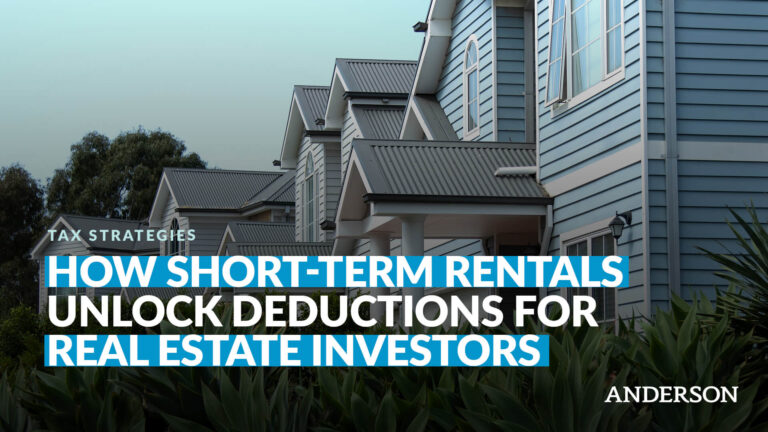

In this episode, tax attorney Toby Mathis sits down with Chris Streit, CEO of CSA Partners, to dive deep into cost segregation studies and how they can dramatically improve cash flow for real estate investors. They explore the biggest mistakes investors make with depreciation, explaining how the IRS treats properties as single assets when they’re actually composed of multiple components that depreciate at different rates. Chris breaks down the mechanics of cost segregation studies, revealing how even a $200,000 rental property can generate $40,000 in year-one deductions instead of just $5,000-$6,000 annually. The conversation covers the impact of the One Big Beautiful Bill’s reinstatement of 100% bonus depreciation, the differences between engineered studies versus software-generated reports, and strategies for minimizing depreciation recapture through 1245 exchanges. With over 20,000 studies completed and minimal audit issues, Chris provides expert guidance on audit-proofing returns, maximizing tax savings throughout the property lifecycle from acquisition to sale, and debunks common myths about depreciation timing and syndication eligibility.
Highlights/Topics:
- 0:00 Biggest Mistake Real Estate Investors Make
- 5:15 Why Regular Investors Should Care About Cost Segregation
- 8:45 What is a Cost Segregation Study
- 12:20 Real Life Cash Flow Examples
- 15:30 Engineering Studies vs Software Studies
- 20:45 Audit Concerns and IRS Statistics
- 25:10 One Big Beautiful Bill and Bonus Depreciation
- 30:15 Depreciation Recapture and 1245 Exchanges
- 35:40 Cost Segregation and 1031 Exchanges
- 38:20 Advice for Investors
- 40:50 Cost Segregation on Syndications
- 42:30 Biggest Myths About Depreciation
- 44:15 Closing Thoughts
- Share this with business owners you know
Resources:
Learn more about Ryan Gibson and Spartan-Investors https://spartan-investors.com/
Schedule Your FREE Consultation
Tax and Asset Protection Events
Full Episode Transcript:
This is the Anderson Business Advisors podcast, the show for real estate investors, stock traders, and business owners. We help you keep more of what you earn and protect what you’ve built. Let’s get started.
Toby: Hey, folks. Toby Mathis here with Anderson Business Advisors. Today we’re diving into one of my favorite topics, which is how to keep more of what you make when you’re investing in real estate. Most people think about buying a property is about cash flow and appreciation, but here’s the truth. Taxes can make or break your investment in your returns. I’m a tax attorney, so I just want to focus on that.
A lot of people don’t understand things like cost segregation, bonus depreciation, depreciation, how to avoid recapture when you sell a property. We want to know those things, so Uncle Sam doesn’t take a much bigger bite than he should. That’s why I’ve invited Chris Streit here from CSA Partners. We were working with these guys for years, and they’re absolutely fantastic. They are experts in the field of cost segregation.
Today we’re going to be diving into that, and we’re going to be going over the entire life cycle from acquisition to improving it, to the eventual sale of these properties so that when you walk away, and I don’t care whether you’re in your thirties, forties, fifties, whether you have a family to protect, or whatever that you’re doing in your individual life, this will have an impact. We want to free up more money so you can do the things that you want to do, whether it’s covering college tuition, go on more vacations, or whatever. We want to help you build wealth. First off, welcome, Chris. Thanks for joining us.
Chris: Yeah, thanks so much, Toby. Excited to have the conversation. It’s a big one these days.
Toby: Yeah, and it’s become huge this year. For anybody who’s been paying attention, we have that One Big Beautiful Bill, and boy did they make some changes that we’ll get into.
Chris: They certainly did. They have already generous code for real estate investors. They just pumped it full of steroids so we can all get the benefit of it. It’s a very exciting time.
Toby: We’re going to get into all that. Let me do this. Let me just say 30 seconds, a little spiel on who you are, what you do, and why somebody should listen to you.
Chris: Sure. Chris Streit. I’m the CEO of CSA Partners. We’re a firm that specializes only in cost segregation and 1245 exchanges. Those are depreciation, depreciation recapture, mitigation strategies for real estate investors in the tax side. We support a little over 11,000 tax preparers across the country doing this one thing because we want to make sure we’re really good at one thing, deliver exceptionally on it, and don’t try to do a whole bunch of things. Okay.
Toby: That’s perfect. You are the one that the CPAs will go to to do something called a cost segregation study, which we will get into what that is and how valuable it is. Is that correct?
Chris: That is correct because as you’ll see, doing one of these things requires an engineering focus that might not be necessarily something the CPA is able to do, and they have a lot of other things to focus on. We take that approach. We are the intersection of construction and tax.
Toby: Perfect. All right, fair enough. Let’s get in some questions because I want to make sure that I’m giving you the opportunity to educate. Let’s just say that somebody owns rental property and you’ve been around the block, whether it be regular, just small commercial buildings, or residential rental property. What’s the single biggest mistake you see that people make when it comes to tax savings with real estate?
Chris: Sure. The single biggest mistake that people make when it comes to tax savings and real estate is when you buy a property and you just get set up with the basic, the standard tax structure for your LLC, your S-corp, your syndication, whatever that may be, the IRS says, hey, great, guess what, you have access to something called depreciation, and we’re so kind, we’re going to give it to you. How they look at it is they say you bought a building, you bought a home. We’re just going to look at that as one single asset. When we all know all those assets inside the home, the carpet, the microwave, all of them depreciate differently, the IRS says, we’ll let you take the straight line, which is dividing the year, which is a very long life, either 27 1⁄2 or 39 years. You can just take your basis, divide that, and take that as a loss every year.
It feels good. It feels like you’re getting something. All you did was buy the property. It’s one of those things that if you just look past the curtain, there’s even more depreciation to go get, but you have to go do it. The IRS just won’t give it to you. That’s the biggest mistake they make.
Toby: That leads us into a very simple question then. Why should regular investors, just everyday investors, not big developers, but just regular folks like you and me, why should they care about cost segregation and the asset classification? What impact does it have on them?
Chris: Even somebody who say acquired a $200,000 short term rental, where you think, I’m not a player, there’s no point in me doing anything like this, no, you are a prime candidate to segregate that property out because just like the big investor or the big developer, that house is not a single unit. It is the sum of multiple pieces of assets that make up that unit, but the IRS treats it and classifies it as a single unit as the standard operating methodology, the cost segregation, and taking these assets, splitting it out, and identifying what assets are short life and long life. That is where you can take an already decent benefit in depreciation and pull it forward a lot.
That $200,000 home, while you may be able to generate, something like $5000 or $6000 a year in depreciation on it, a cost segregation might be able to pull forward $40,000 in deductions all in year one, which we want money now, not tomorrow. That’s what a cost segregation does.
Toby: It puts more money in your pocket now, so you can do things with it now. I’ve seen you speak and you have this valuation. It looks like a bunch of Greek symbols and stuff.
Chris: Yes. With that money in your pocket now, I think we all understand a little bit that if I had a hundred dollars today, it’s much more valuable than a hundred dollars a year from now. What we often don’t think about is we know we want more money, but there’s actually a quantifiable value for what having money now versus what having money in the future is. A hundred dollars a year from now is actually worth $82 today.
When you invest in real estate, you are buying a future value or a present value of future cash flows. That’s what everything is all about. That’s what we leverage. That’s why we use other people’s money to go about doing this. The government with the cost segregation says, we’ll let you use our money and we will not charge you for it at all. That’s cost segregation, that’s bonus depreciation.
That present value of the asset you bought based on the rent you’re going to get and the appreciation you’re going to get is incredibly valuable because that money, you probably have a lot of things you could do with it. You’re an investor. Even if you’re just starting off, you can do more with that money. You can pay down debt, you can pay for improvements. If you want your family to be happier, you can take them to Europe, but that money is yours to use while you own this property.
Toby: All right. Let’s get into the mechanics of this. What is a cost segregation study, and how does it actually put more money back in your pocket?
Chris: Sure. The best way to think about it is imagine a Lego, already constructed. That’s the home. Imagine it’s a house that’s made of Legos. When you buy that property, it is the construction of all those Legos that is your house. That is the single asset. You look at it and you say, I can tell. If I took that thing apart, there’s a whole bunch of different assets in there. I have my walls, I have my floors, I have my cabinets, I have my plumbing, I have my electrical, I have lighting.
The cost segregation is taking that Lego, that property, and effectively pulling it apart. Instead of saying it has one life, we’re saying there’s four different lives in here. There is the life of the assets that are the longer life assets. Those are things that could not be removed from the property without causing damage. Your roof, your walls, your HVAC, these things are longer life things that can’t be accelerating depreciation on now.
Everything inside the building, imagine that Lego, we’re pulling it apart, your flooring, your cabinets, things that could be removed without causing damage to the building. Those things are short life assets. They have lives of five years and seven years, and then all the improvements to the land have a life of 15 years. What you’ve done in deconstructing this Lego is listed out, you’ve segregated each asset of the single unit, and said, this thing has a five year life, this thing has a seven year life, this thing has a 15 year life.
Why does that matter? Why is that important? Instead of taking the straight line depreciation off of the single life asset, you’re able to pull forward all of the depreciation, the difference between 39 and five, or 27 and five, or 39, 27, and 7, 39, 27, and 15. The delta between those is all the depreciation you get to pull forward. Why that matters to you? If you are only getting that same $200,000 house, $6000 in the depreciation loss in that year, you may have quadrupled that or even brought it up by 10 x for that year one, which is money back on your return or what you owe for taxes at the end of the year whenever you file.
Toby: Let’s do a real life example if you could where it improved cash flow. Helping out a property owner. Do you have anything you could just throw at us?
Chris: Yeah. I think we could just stay on that $200,000 example because we do a lot of those. Often times people think it’s only the really big complex properties, but a lot of Airbnbs that have a low purchase price do qualify. I can think of one that we just did the other day, it was around just a little over $200,000. You have to subtract the land out. Land wasn’t very much. You cannot depreciate land. Land does become a point of contention sometimes in how much it’s worth. I know land value is one of the most subjective things out there.
Imagine there’s $200,000 left after we’ve subtracted the land. This individual was able to obtain somewhere in the range of $5000-$6000 in depreciation a year. If they had a tax rate of 30%, that means they’re getting $1500-$1800 benefit. They were getting that benefit for the prior three years since they had bought the property, which was in 2022. For that three years, they received that call it a $1500-$1600 benefit.
When we went in and did the cost segregation, we were able to identify 32% of the assets that they had in their property were short life, which if you think about a home, it’s probably makes sense. Think about the things you have to replace. Think about the things that age. As a property appreciates, think about the things that don’t actually appreciate. That’s what was segregated. That 35%, again, from $200,000 was a $70,000 amount to deduct, which at a 30% tax rate, $21,000 tax benefit. With somebody getting $1500-$1600, you just improved their cashflow by $20,000. If that property did need a new HVAC or maybe need a new cabinets, you bought that with the government’s money. You could maybe get more rent now. That’s one very good example.
Toby: Do you have any that just stick out? I know that there’s the folks out there that do the mobile home parks and some of the self storage, and they get even higher numbers. That’s great by the way, and we’ll get into the One Big Beautiful Bill and how it unlocked that. Are there any that just stick out in your head where you’re like, oh, my God, I didn’t expect that?
Chris: Yeah, there’s a couple. Mobile home park is a great one because you would think, what’s short life on a mobile home park? When you think about a mobile home park, this one does stick out. It was Aaron. That mobile home park, the whole thing is basically one big land improvement, trees, shrubs, parking lots, things you wouldn’t have thought maybe had even been an association with cost segregation because of bad information.
From what we’ve seen from other firms who do these, those are the easiest things to overlook because it is a tedious process to go in and look into the assets. That one ended up saving from a basis standpoint, even though it was only 16%. The amount spent was well over $4 million. On a six on a 16% reclassification of pretty much just land improvements, it was big.
The $200,000 home has value, but the one that sticks out to me, Toby, the most is we went behind a big four firm. There’s a lot there, but this is the only thing that we do. Going behind this formula at 30 developed properties, they ranged in basis anywhere from 50 million all the way up to hundreds of millions of dollars. Going behind already completed cost segregations found additional $2.2 billion in basis that gave them a tax benefit that you could imagine was pretty large. As the numbers go up in what you pay for the property, the more opportunity there is for a deduction.
Toby: This is an interesting point. I’m going to put a little line underneath this. The type of study you get actually makes a big difference. When you go, there’s detailed engineering studies like what you guys do, and then there’s rule of thumb, there’s software programs, there’s a bunch of stuff out there, what you just said was, here’s a firm, big four firm, and they were worried about their study. You could tell if they were leaving that much money on the table. What are the differences, and why would somebody do an actual engineering study?
Chris: Sure. One of the things that happened over the last four or five years, and it was a result, we’re going to get into bonus, bonus being around from 2017 and 2022, and then slowly going away, what this did, and that was also predated by 14 years of 0% interest rates and a lot of access to capital, is cost segregation started to become known. It became more democratized. More people had access to it. Before it may have been, hey, only a big property, it makes sense. Now with some things that the IRS has allowed, it became smaller and smaller properties.
As a result, you had a lot of things pop up. You had a lot of groups that say, we’re just very search engine optimization heavy. They would take property detail and just spit out a report right away just using simple averages based on a couple of inputs and charge a very modest price for it. They were capitalizing on a moment to make money, which you don’t fault them for, but to do that they have to be conservative. They leave benefit on the table, and it’s not necessarily the most defensible thing.
More broadly, because that happened, we have a bigger issue in the country with tax preparers themselves. There is a major shortage of CPAs. If you’ve watched the news or you’re in the industry, you know this to be true. There’s not as nearly as many people entering the industry as there are exiting. The same is true for cost segregation. To have the engineered methodology down, you need to have a really good tenure of strong, intelligent people, a really good technology to scale it, so that way all the detail can be captured to be defensible for the IRS. That produced a situation, environment, or a market for cost segregation.
Toby, I don’t even know if it was conservatism. I think it’s more of a, what can I get done with the resources that I have. I look into a building. I just look at it, I estimate, then I scale down a little bit to make sure I’m not overestimating, and then I miss a lot of stuff. In that process, I might not walk the full building.
A good study is one that does full engineering, meaning it’s a walkthrough and it’s detailed, which is why we measure everything with lasers. We have proprietary tool. Those lasers measure things, send them to a tool, and then apply a number down to the millimeter of what the asset is that’s being measured and then pulled forward to the study. Without that, we find that it decreases our credibility with the IRS if we don’t do something like that. We will certainly miss assets that could be deducted, which takes money out of the pocket of the people who we represent.
Toby: Let’s just put that in perspective. You used the example of $200,000 with the 30%. I think that was your example.
Chris: Yeah, that was right.
Toby: Let’s just say it’s $60,000 sitting on the table. If they’d done an engineering study, maybe it would’ve been higher, maybe it would’ve been closer to 40%, or maybe they did a online study that gave them 20%. They got a $40,000 deduction as opposed to a $70,000 or $60,000 deduction. Saving themselves a few hundred bucks might have cost them $10,000 in their pocket. Is that a fair assessment?
Chris: That’s a fair assessment. When we think about what percentages, that is. As the pricing goes higher, you could be talking about a 40% to 50% difference. It scales not in favor of the taxpayer if they chose the shortcut at the front end.
Separately too, what I’ve seen in the market, a fully engineered study also does a land value allocation that’s compliant with the IRS. I don’t want to scare anybody away from cost segregation because it is very detailed out in the tax code. It’s not a loophole. It’s not an intricate or conflict strategy. It is detailed out to do it and how to do it. What we look at is we just say, we’re going to go through all these bullets and do it exactly how they say, so it can hold up and the deduction holds.
What I’ve noticed is the land values these days are always wrong because land values start from the central appraisal district at the local level, and those are all scattered all over the place. It takes manpower, it takes people on shore to go in and look at that and research that. If that’s wrong, all the deduction is at risk. That’s one of the major critical elements of an engineered study.
Toby: Before we get into One Big Beautiful Bill and what it did, I’m just going to speak because I know this is true. I have people out there, my conservative clients, that are saying, hey, I don’t want to wave any red flags. I know you guys because we’ve worked with you guys for years. Do you know the numbers off the top of your head, how many reports you’ve done and how many audits you’ve actually had to depend just to give people some idea of how often this thing actually? If it is the trigger, what does it even look like as far as dealing with the IRS?
Chris: Sure. Dealing with the IRS is interesting. Gosh, over the last 12 months, it was one of the most interesting time periods to deal with the IRS because they went from this to this in a matter of a quarter. It was amazing.
Toby: It got DOGE.
Chris: Yes, it got DOGE. We get to see that firsthand. What I’ll say is since our existence, we have not triggered an IRS audit. What happens is an individual or an organization gets audited, and then the cost segregation falls under the scope. When that happens, we get brought in.
One of the things I want to say is different about us is we don’t charge anymore to come in and defend every ounce of that study, including being on every call with the IRS if we have to, which is why we end up winning, our element gets moved away, and then something else becomes the major focus of the audit because we have so much detail behind it. From a sheer number standpoint, it can give you a sense of what audits look like.
Just using this last year, our average number of audits that we were involved in doing about 4000-6000 studies in a year, depending on the market, was two to three, a very low percentage. Those people just got picked up in an audit. It fell into the scope. We joined, we provided the report, we provided the IRS, provided the land value, then they had a few questions on what this asset is and what this asset is, and then they closed this part of it out, typically the way it goes.
I will tell you that number doubled last year going into Q4 because of the 80,000 IRS agents that were hired in the prior administration, and then that number immediately got cut in half after DOGE came in. What we saw with the IRS is they are just looking to make sure you were following the letter of the law more so than they are arguing what’s a short life and a long life asset, which may have been what they were more inclined to do in the past.
The unfortunate situation that you get picked up in an audit, I can promise you it won’t be because of your cost segregation. If we’re the ones who did it, it’s going to win. The key things that they’re looking for now are, did you do the land value appropriately, and do you have detail back up the cost that you used to deduct? That’s where anybody who took a shortcut will not, and it will expose a taxpayer to a clawback.
Toby:Yeah. The IRS has a checklist that they follow on these things. Is there such thing as an audit proof return in cost seg?
Chris: It doesn’t mean you can’t get audited, but I would say the IRS has that checklist of what a quality study is and all the details that go with that. You will win if you follow those. They can’t beat you. You may get audited still. Again, I have not seen one on our end as a result of the cost seg. If it becomes part of the scope of an audit, if the study has followed those specific guidelines of what they call a quality study, they try to make objective of the word quality with definitions in these bullets that they provided, you can google it or ask ChatGPT what they are, if those studies follow that methodology, you will win in an audit and it will be thrown out.
Toby: Yeah. I’ve had other members of your firm come in and teach before. The number that was thrown out to me last year was over 20,000. You guys have done over 20,000 cost seg studies and had about 20 audits at the time. Your numbers that you’re telling me now seem to be consistent exactly with that and that you never had one go south.
Chris: Correct.
Toby: That’s the difference between using a firm that’s an expert at something versus using some software or your accountant decides, all of a sudden they’re a cost seg specialist. All of a sudden, they bought some software, it’s going to cost you money, and it’s going to put you in a potential negative situation. Whereas if you just do it right, you have nothing to worry about. It’s not a red flag.
Let’s talk about money because this is the big one. One Big Beautiful Bill. There was a big change in there, and you already mentioned it. It was the hundred percent bonus depreciation, but what is that? How does that impact just regular investors out there? Maybe they own four or five rental properties, maybe they own one. Why does this matter?
Chris: Bonus depreciation is one of the greatest gifts that any real estate investor and any cost seg provider or CPA could be given because of what it can do to an investor. When you talk about depreciation, you’re talking about the life of assets essentially. You’re just cutting away each year on the life based on what’s available to take. As mentioned before, very long life is where you start, cost segregation shrinks it. It takes it to 15, seven, and five. You’re cutting bigger chunks of money off and take as a loss.
What bonus depreciation is and what’s been given to us for properties that are required after January 20th, 2025 is instead of that 39 and even the five, seven, and 15, all the five year, seven year, 15-year assets, instead of those cuts multiple times, it’s all one number up at the front. An example might be that a year one benefit in the cost segregation study that we identified, call it a $200,000 home, that $60,000 benefit or that $40,000 benefit, the year one benefit, only a portion of that goes into year one. A hundred percent bonus ensures that all accelerated depreciation comes in year one. If you had zero bonus at all, that same $60,000 benefit may have only been an $11,000 benefit, but you would’ve got it for five years, and then the benefit would’ve shrunk in years six through seven, and then an eight through 15.
Bonus depreciation says, everything that you get, every item that is depreciable at the accelerator rate under 20 years, you can take all that benefit in year one. You’ve basically front loaded and supercharged the amount of cash the government will give you in depreciation.
Toby: Yeah. It’s like if I bought a computer in my business. Let’s say I spent $2000 on a computer and the IRS says it’s five year property. You’d spread that out over five years, or you have the option under bonus depreciation to just say, I’m going to write it all off the entire $2000 in year one. For a real estate investor, it’s multiplied by the significant benefit. You might be looking at, hey, could I write off an extra $300,000 on an acquisition that I got? Maybe it’s a million dollar duplex.
You could be looking at a massive deduction, which to me then triggers, okay, but what about the lifetime of that property? I own the property, I bought the property, I improved the property, and then I sell the property. Am I going to have a problem when I sell? Do I have recapture issues?
Chris: Recapture is definitely a real thing when it comes to depreciation. Depreciation, as I mentioned before and that present value of cash flow scenario, is here is money now, we’re letting you accelerate depreciation on it. When you sell an asset, the depreciation you’ve taken, you give back. Even if you didn’t do a cost segregation, you are paying it back at a lower rate, but you don’t get the benefit of the time value of money.
When you do sell a property, if you do nothing at all, then the same cost that you use to depreciate the asset is the basis to determine how much what’s called 1245 recapture you owe back. Just to give a simple example, let’s imagine we were able to identify a $50,000 tax benefit. That resulted from accelerated depreciation from cost seg when you bought a property. You get $50,000 now. It’s in your hand, you can do stuff with it. You sell the property in five years. The government says that $50,000 is owed back to me at that point in time.
If you want to think about just a simple way to think about how time value money would work, if you took that $50,000 and put it in a 5% CD over that five year period, $2500 a year in interest you could have gained. Imagine myself and many of you when you’re buying property, you might have debt to pay down, you might have improvement budget that you want to do that might be on credit, that might be as high as 8%, 9%, 10%, 11%, 12%, 13%, 14%, 15%. That money could have gone to that as well, and you can see the return that you get. That is something you have to deal with. The opportunity that people have, the IRS does allow you to value those assets at the time of sale to readjust what your basis is on how much you pay back and recapture, which is another big part of what we do as a firm and just being experts in property evaluation.
Toby: That property valuation, you guys call that a 1245 exchange. Is that correct?
Chris: It’s called a 1245 exchange. Yes, that’s correct. The reason why is when you do a cost segregation, when you say this is not just one simple property, you segregate it into a couple of things. First, the land so you know what the land is, and that’s pulled out, and then 1245, which is short life assets. Those five, seven, and 15-year assets we talked about are all 1245 assets.
The 1250 assets are the long life as assets. These are structural, these are things like your roof, your HVAC, your beams, two by fours, all of those items. Why it’s called a 1245 exchange is imagine this. Imagine you have a building that you bought that over the course of five years has gained value.
When you really look at that building, what has gained value? The structural items have gained value, and the land has gained in value. The carpet that you’ve walked all over spilled your coffee on that the dog ran through on has in no way gained in value. It’s actually gone down substantially. That carpet has been now absorbed by the 1250 property. The foundation underneath it has grabbed it and said, you are now mine because you’re obsolete. That’s what a 1245 exchange is. It’s exchanging it back to the 1250.
Toby: Going to why that’s important because some people may not know the difference between how much tax you pay on 1250 versus 1245 recapture.
Chris: Sure. When you do that cost segregation, we’ll use that same example of the $50,000 benefit. That $50,000 is the basis for 1245 recapture, which would be the same. The $50,000 is what you got. You’re giving back dollar for dollar. Your only benefit was the time value of money. But since we know that that carpet and the other 1245 assets have devalued, and the IRS code says, when you’re determining your basis to use a fair market value, you have a fork in the road here, you can use the cost, which is easy, it’s right there, it’s known, and it’s going to protect you, then you also have a fair market value.
How do I prove the fair market value of a 4-year-old carpet? How do I prove the fair market value of 7-year-old microwave? That’s where we do come in. We’ve procured and commissioned a third party appraisal study that built the curve for 350 different assets over a 15-year period to do that exact same. No matter what age it is or what type of asset it is, we can revalue it. That same $50,000, if we identify going through each individual asset, every microwave, every piece of carpet in that property that was cost seg, revaluing it using these third party tools, we’re able to identify.
Typically, 80% of it is obsolete. It no longer has a value using the fair market value and having proof of doing that, so that same $50,000, your basis would drop from $50,000 or what we would owe from $50,000 to $10,000 in 1245 recapture, which is a major benefit, even more so than a cost segregation because that is permanent savings that you get and you get to keep for forever. It just makes your net tax position and your present value of cash flows significantly more valuable and higher, which is why we invest in real estate to begin with.
Toby: When you say permanent tax saving, that means exactly that. This is money back in my pocket, I never have to worry about the future as far as giving it back.
Chris: Exactly. Cost segregation benefits you as an investor because it defers taxes that you can use for other things as a real estate investor, as you would expect. The 1245 exchange ends the cycle of the property, and it keeps more of that money in your pocket. It is not a deferral. Your net position is now this, go live a happy life. This is your money.
Toby: You’ve mentioned deferral, and most people are familiar with the 1031 exchange, something where they can trade a property for other property and not pay any tax. Does a cost seg study mess that up in any way?
Chris: What a cost segregation study is with a 1031 exchange, it allows you to still do the 1031, but what might happen when you do the 1031 is if you want to buy a new property and cost seg it, your basis will be lower because you keep pushing the basis down with the 1031 exchange, but it doesn’t impact the initial cost segregation.
Toby: But you can still do the cost seg.
Chris: Absolutely, you can still do it. It’s just if you’re buying a $10 million property, you 1031 to it from something else, your basis is going to be the starting point from the initial purchase, it’s going to be the net depreciation you can take.
Toby: On the same token, doing a cost segregation study does not prevent you from doing a 1031 exchange in the future.
Chris: Correct. Absolutely correct.
Toby: All right, let’s go back. We talked a little bit about the red flags. We talked about the benefits of the cost seg study. Let’s go over some specific advice that you might give. Let’s say that you’re a 40-year-old investor and you have a couple of rental properties who wants to maximize tax savings. What advice would you give that individual?
Chris: I imagine if you are going down that path, you have a calculator that you’ve started to work through. You either bought one somewhere, using an online version, or you made your own in Excel. If you have not accounted for accelerated depreciation, you’re doing yourself a major disservice because it changes every number, or it changes the primary, the output in your net cash flow if you do not account for accelerated depreciation.
What I would say is that’s the first place to start. To be safe, take a 20% number. It’s probably going to be more than that, but identify what depreciation you’re accounting for now and see what you could move forward, especially with a hundred percent bonus. If you did that, you’d probably realize it’d be the same thing as if your bank said, hey, you know what, instead of having a quarter put down, I’m only going to require you to put 5% down. Your buying power expands. If you’re wanting to get into real estate and you are that person, your calculator for your individual property should be to think bigger, but also look at how you can do this because it expands your buying power without increasing your interest expense.
Toby: You’ll do the study. You’ll do the analysis for them, just run the numbers for them. You’ll do that for no cost, right?
Chris: We will, and we actually do this for many Airbnb calculators as well that are out there. They naturally just come to us, then we send the number back. We have a simple form, and then we work with Anderson on this as well. There’s andersonadvisors.com/csap. You go there, you put in the details. We will come back with the projected benefit analysis for you to use that calculation.
Toby: I’ll put a link in there, or you can just type in analysis down in the comments and we’ll send you the link. I’ll put the link in the show notes so somebody can just go in there and say, I’m curious, is this going to save me money? They can click on it. All right. Two questions before I let you go. I’ve been very generous with your time. Questions I always get is, for our folks that invest in syndications. Can you do a cost seg on a syndication? How does that work?
Chris: You can. There’s more complexity to it, but imagine if you are in syndication, the cost segregation output’s going to be the same from a depreciation standpoint. We identified this, here’s the tax benefit. How you apply the benefit, this is where the partnership that we have with Anderson, I think is so valuable, is key because how you can apply it to the members of the syndicate. It does flow down as a net benefit. It is still very much applicable, but it does require the connectivity with your tax advisor and tax preparer on how you want to apply that amount, but it is 100% still something people have eligibility for.
Toby: All right. Last question. What’s the biggest myth you’ve been hearing about depreciation that’s out there on the internet or that you’re hearing from clients?
Chris: I think the biggest one isn’t that provocative, but there’s a big myth and misconception that this is something that I can only do in the year of acquisition. The reality is if you bought something six, seven years ago, it still is eligible for cost segregation. The boat has not been missed, and the IRS actually makes it very simple. You don’t need to amend a return. It’s not a red flag item. They have forms for you to fill out that we actually fill out for our clients that provide the tax prepare. That make it so easy, they intended and expected this to happen, and some people just say, the years passed, it’s too late. Completely untrue. It does not increase the price of doing one of these and is a benefit that could just be found. That’s the biggest one that I’ve seen that I hope can correct for a lot of people on here. It’s typically impactful, and it’s made to be very easy by the IRS and by us.
Toby: All right. Now I can’t resist. I said that was the last question, but here’s the real last question.
Chris: Okay. All right.
Toby: You could cost seg a property after you sell it too as long as you get access to it?
Chris: As long as you get access to it. The reason you’d want to do that is because the moment you segregate a property, yes, you get a big cash benefit, but it allows us to do a 1245 exchange because you cannot revalue the property unless you’ve segregate it to a bunch of little pieces. If you sold a property and you want to get access to it because there might be a benefit to you, you can get all that catchup depreciation you never took advantage of, and then we can revalue your assets as you sell the property and then save you money on the backend as well.
Toby: Yeah. I saw a client save about $70,000 on a sale of a property they own for five years simply by doing the cost seg after they sold it.
Chris: It’s a beautiful thing, right?
Toby: Yeah, it’s crazy. Sometimes you look at this and you’re like, that can’t be true. It is true.
Chris: When you go back to your syndications, what if you could just go back to everybody who’s a part of it and say, hey, guess what guys, I found another $70,000? It’s a beautiful thing.
Toby: We should have watched Toby’s channel. Dang it. All right. Chris, you’ve been more than generous. I appreciate it. Hey, guys, if you can click like, if you could share this with anybody out there that you think would benefit from it, the link is in there. If you guys want to get a free analysis from Chris and his group, CSA partners, that would be great. Chris, thanks again and I appreciate you coming on.
Chris: Yeah, thank you much, Toby. I appreciate the partnership. Let us know if we can help you, everybody.
Thank you for listening to today’s podcast. Show notes for links to everything mentioned in this episode can be found on our website at andersonadvisors.com/podcast. Be sure you subscribe to our podcast. If you are already a subscriber, please provide us a review of what you thought of this episode.












